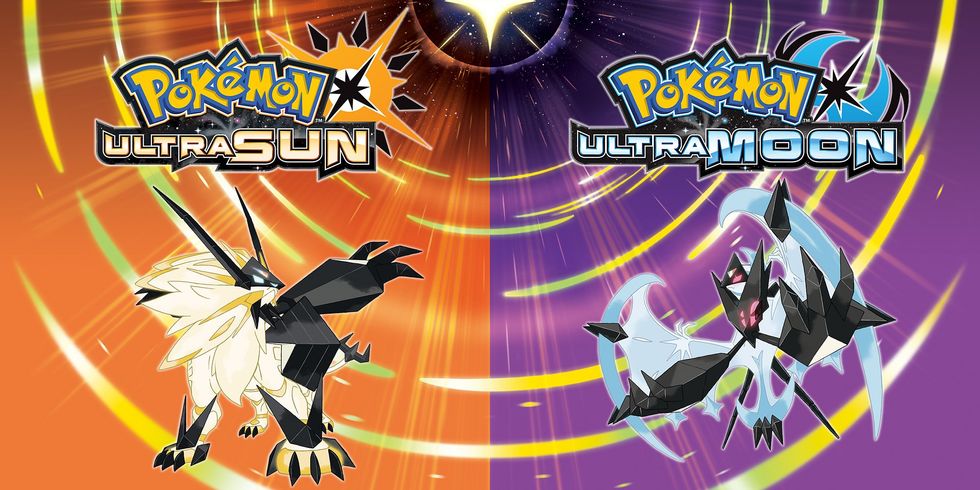Pokémon, like many other long, multi-decade franchises in existence, follows a pattern in how it releases and produces games. Usually, two versions of the same game are produced ("Gold" and "Silver," "X" and "Y," "Sun" and "Moon," etc.) and are released to start a new "generation" of Pokémon.
However, usually after a year or so, Game Freak will release another game that is an "upgraded" version of the previous two games and it has a lot of new content, usually an altered story, new characters, and often new Pokémon or alternate forms of Pokémon. However, this formula was stopped in generation five, when the long-awaited "Pokémon Grey" never came, and we instead received the best games in the franchise (in my opinion): "Pokémon Black" and "White" 2, which were the first sequels in Pokémon since "Gold" and "Silver." Needless to say that some were excited or intrigued by the change, but many were disappointed, saying they were cheated out of their patterned game. Generation six went on to disappoint more people, as "Pokémon Z" was never announced, and generation six ended with a soft whimper, instead of with an excellent game to close them out.
Generation seven, however, has once again returned to the old formula... sort of, at least. Months after "Sun" and "Moon's" release, and some of our aforementioned disappointment, we were expecting "Pokémon Eclipse," "Pokémon Stars," or even something along the lines of "Pokémon Prism," as a fan-game of the same name had been cruelly shot down by a C&D order from Nintendo not long before its release. Instead, we received word in July of "Pokémon Ultra Sun" and "Ultra Moon," games that were ambiguous at first, but later found out to once again be a "third version" like many years ago.
So, does that mean that "Ultra Sun" and "Ultra Moon" are good games? If you remember my review of their predecessors, you'll recall that while I enjoyed them from a gameplay standpoint and praised a lot of the quality-of-life changes, "Sun" and "Moon" fell flat as games, and I was overall disappointed in them.
My verdict with "Ultra Sun" and "Ultrar Moon" is a bit different, though. While they shine as games on their own, they are a bit lackluster as Pokémon games. Here are three reasons why they're great, though. Warning! Spoilers ahead:
Hau as a Character:
One of my biggest complaints about "Sun" and "Moon" was its idiotically friendly "rival", Hau. In Pokémon, having a rival that constantly feeds you items and good advice doesn't really constitute a true rival, in my opinion. He's just a friend character, and he only serves to make the story easier. This time, however, Game Freak not only made Hau's Pokémon stronger and better but gave him more meaningful dialogue other than going on and on about food and having a good time running around and being crazy. He also develops as a character more, with his desire to prove to Guzma and Hala that he's capable and strong.
Mantine Surfing:
One of my biggest complaints about the Pokémon series in general, or at least from generation three and on, was its inability to provide adequate rewards for doing battle facilities. BP, short for battle points, is a currency in game that you get through playing in the Battle Tower, Battle Frontier, or in "Sun" and "Moon," the Battle Tree. But starting in generation six, the games began to be less stingy with BP. In "Ultra Sun" and "Ultra Moon," there is a minigame where you travel between islands on the back of a Mantine, a large stingray Pokémon. You receive BP by getting points and doing tricks on the way. Not only is it fun, but you can rack up a lot of BP to spend on items. Nice change, Game Freak!
Necrozma:
Pokémon has always had human villains in the series, and sometimes legendary Pokémon controlled or upset by humans. Don't get me wrong, Giovanni, Cyrus, N, Ghetsis, Colress, and Lysandre are all cool characters, but it was time for a change. In "Ultra Sun" and "Ultra Moon," your foe isn't necessarily a human character. While Lusamine took the role as villain in "Sun" and "Moon" with her crazed desire to find her husband that manifested in an obsession with the Ultra Beasts, namely Nihilego, in the next games, Lusamine takes a more heroic stance, claiming that she wants to save the Alola region from having its light stolen by Necrozma, a formless entity you don't know of unless you played the previous games. In order to save the region and the lives of many, you must defeat Necrozma in battle, and it is no slouch. Probably the hardest battle against an NPC I've faced since Red in HGSS, no joke. The difficulty level of this game is also another high mark. Alola doesn't mess around!
I could talk about my complaints too, but instead, I'll simply go through a few off the top of my head. There's no national Pokédex, which is a mainstay of the series and a jarring change. It's also a testament to Game Freak's rushed frenzy to release this game, as they weren't willing to write new Pokédex entries for the other 400 Pokémon. Cutscenes are still here and still unskippable, but they at least have less cringy dialogue in my opinion. Finally, after defeating Rainbow Rocket in the post-game, there's not much to do other than silly little sidequests that amount to nothing.
In the end, did "Ultra Sun" and "Ultra Moon" succeed in being better than their predecessors? Absolutely! If you didn't play "Sun" or "Moon" and want to play generation seven, please please get these games instead. They're so much better and more interesting! Happy gaming!
Final Rating: 8/10
















